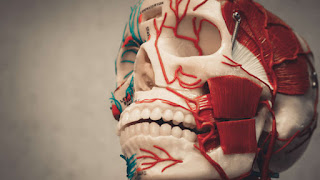The World’s First Human Head Transplant
Sergio Canavero claims he can make you immortal, but there’s a small catch. He first wants to chop off your head.
If that’s not a deal-breaker, you’ll be happy to hear that the Italian neurosurgeon has announced he will perform the world’s first human head transplant in China sometime in December. (He’s vague on details, possibly for security reasons.) He will remove the head of a patient—an unidentified Chinese national—and attach it to a donor body, origin (and cause of death) unknown. The spinal cord will be fused and the blood vessels and muscles attached. The patient—same head, new body—will be kept in a coma for around a month while he (or she?) heals. Canavero says that if successful, his patient will eventually be able to walk again.
If his plan sounds ludicrous, that’s because it is. Nobody knows how to fix a broken human spinal cord, and the scientific evidence that supports Canavero’s approach is highly questionable. Oh, and the ethics of performing an unproven procedure that jeopardizes one (or possibly two) human lives are sketchy, at best.
None of that deters Canavero, so hold on to your hats.
Paging Dr. Frankenstein
The human spinal cord is a long, thin tube of nerves that connects almost every part of the body to the brain. It is the pathway that allows the brain to give commands to the body, and the cells there are highly specialized—so much so that once damaged, they are effectively lost for good. Regenerating damaged spinal cord cells is extraordinarily difficult.
In the U.S., there are an estimated 12,500 spinal cord injuries every year, which is why Canavero is not the only scientist desperately trying to mend spinal cords. In the 1960s, renowned scientist L.W. Freeman experimented on rats, cats and dogs to find out if there were any circumstances under which spinal cords would repair themselves naturally. He removed small sections of spinal cords, then waited to see what would happen. Of the 66 animals that survived his surgery, six eventually regained what he deemed a “good” level of motor function.
That appeared to be an impressive achievement, but it did not necessarily apply to humans. The cut Freeman made was sharp and clean, but when humans injure their spinal cords, the tear is messy. Regardless, Canavero says Freeman’s work “shone light on the path,” inspiring him to delve deeper into lesser-known spinal cord research.
He eventually found something else that excited him. After a skiing accident left a woman paralyzed in 2005—her spinal cord was completely severed—surgeons in the U.S. removed the damaged part and filled the gap with collagen, hoping the ends would fuse together naturally. A year and a half after the surgery, the woman could move her legs again.
Canavero decided this success, which defied medical dogma, demanded more research. “I had been taught spinal cord regeneration is not possible,” he says. “That was the proof that I had to accelerate the whole process.”
To read more please click the frame above.





No comments:
Post a Comment